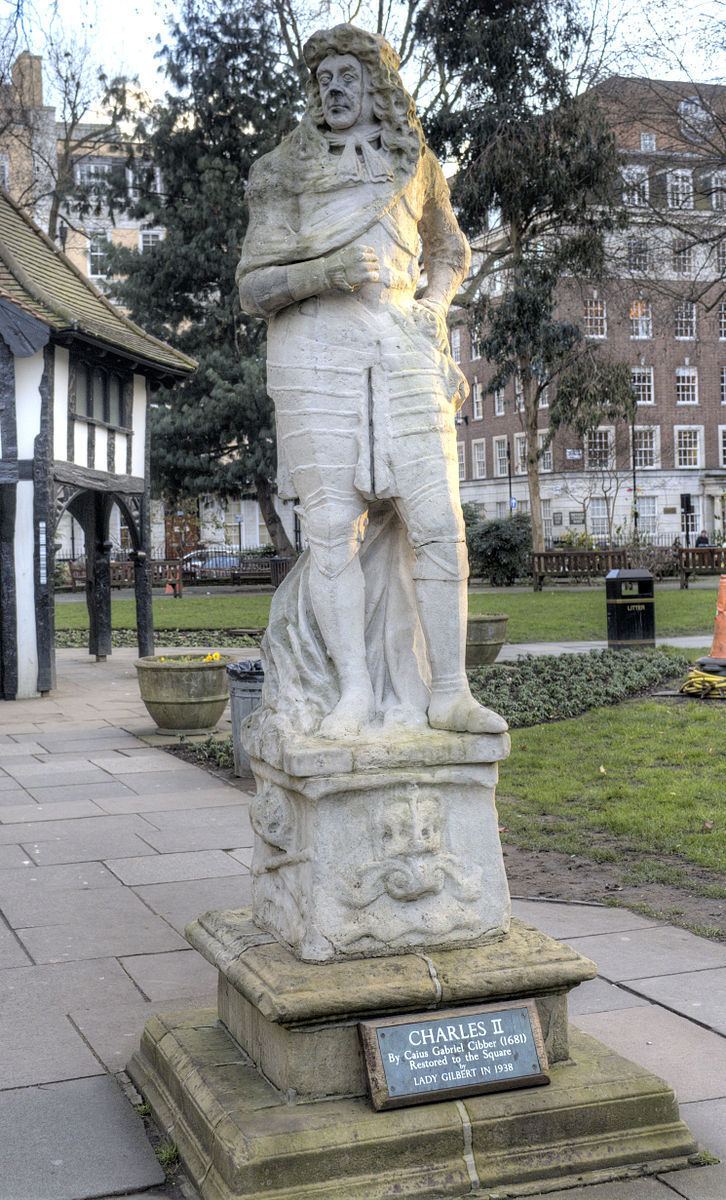Year c. 1680–1 Created 1680 | Dimensions 195 cm (77 in) Phone +44 20 7641 2000 London borough City of Westminster | |
 | ||
Hours Closed now Sunday9AM–8PMMonday8AM–8PMTuesday8AM–8PMWednesday8AM–8PMThursday8AM–8PMFriday8AM–8PMSaturday8AM–8PMSuggest an edit Similar Statue of the Viscount, Statue of the Earl Kitchener, Statue of Henry Havelock, Equestrian statue of the Duke, Statue of Henry Irving - Lo | ||
Charles ii statue on soho square london 101212 15 30
The statue of Charles II is an outdoor sculpture of Charles II of England by the Danish sculptor Caius Gabriel Cibber, located near the centre of Soho Square in London.
Contents
- Charles ii statue on soho square london 101212 15 30
- Don juan in soho charles ii statue costume
- History
- Description
- References
Don juan in soho charles ii statue costume
History
The statue was once the centrepiece of a fountain erected in the middle of the square in 1681, each corner of which had statues of river gods representing the Thames, Severn, Humber and Tyne. The water, which was pumped by a windmill in nearby Rathbone Place, flowed from jugs into a large basin. It appears to have been one of a number of works by Cibber that stood in the square. By the early 19th century, the statue was described as being "in a most wretched and mutilated state; and the inscriptions on the base of the pedestal quite illegible".
In 1875–6 the square underwent substantial changes to its layout, during which the badly deteriorated statue was removed and the fountain demolished. The statue was rescued by Thomas Blackwell of the condiment firm Crosse & Blackwell, who had offices in the square. He gave it to his friend, the artist Frederick Goodall, with the intention that it might be restored. The present half-timbered gardener's shed took the statue's place at the centre of the square. Goodall installed the statue on an island in a lake at Grim's Dyke, his house near Harrow Weald; he wrote that "in the twilight it looks very mysterious and weird with its reflection in the water." It remained there when the dramatist W. S. Gilbert purchased the property in 1890, and there it stayed after his death in 1911, despite a request from Crosse & Blackwell for the statue's return, which Gilbert apparently ignored. Gilbert's widow agreed to bequeath the statue to the committee responsible for the square's upkeep and following her death it was duly moved back to the square, where it now stands a short distance north of its original site.
Description
The statue portrays Charles in a standing pose, left hand on hip, with his head turned to the right and wearing a long wig. He is shown wearing some body and thigh armour and a heavy long cloak at the back, and formerly held a baton in his right hand. The low pedestal once had an inscription on it, but this became illegible as long ago as 1815, leading to some dispute at that time about whom the statue was meant to represent. As the square was once called Monmouth Square, some people erroneously supposed the statue to represent Charles' favoured illegitimate son, the Duke of Monmouth. By the 1920s it was described as "black with age". The pedestal's decorative carvings comprise a crown in relief surmounting scroll motifs on the front and rear, with each side depicting a crown surmounting crossed sceptres and a decorative riband.
Both the statue and pedestal are in poor condition and are seriously eroded, especially around the face and right arm. The baton once held in the right hand has disappeared. The original face has been replaced with a mask-like substitute that has been cemented on (possibly during restoration work in the 1930s), the left arm and leg are both broken, and some time before 1987 the entire statue was covered in a concrete wash which has now either been removed or worn away by the elements.
